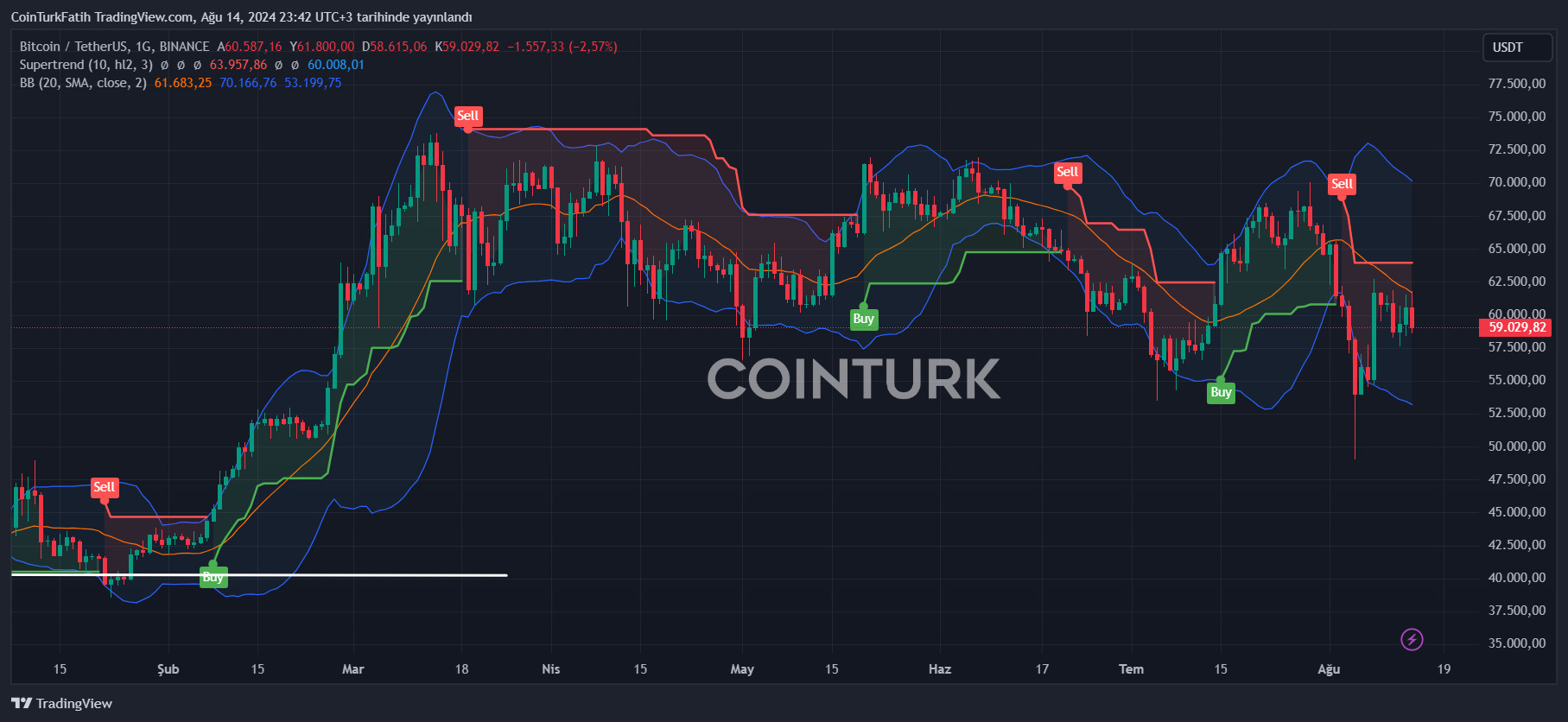Bitcoin price dropped sharply after reaching the $62,000 mark, surprising many after the CPI data. The decline, driven by a lack of volume at higher levels, was discouraging, especially for altcoins. So, what is the current status in the 13F filings reporting ETF holdings of companies?
Bitcoin and Current Status
Investors hopeful for August faced a bigger nightmare period last week than in previous months. BTC, which saw a 5% increase, dropped to the $58,900 levels in less than two hours today. It then made a deeper dip and was trying to hold onto $59,000 at the time of writing.
Goldman Sachs submitted its 13F filing reporting second-quarter positions to the SEC. The company holds $418 million worth of BTC ETF. Of course, these are assets acquired by the company’s clients. There is demand for ETFs from many issuers, primarily BlackRock and Fidelity. Considering the company manages $2.81 trillion in assets, if the strong growth rate continues, more demand could come from here.
According to CNBC, JPMorgan, Bank of America, and Wells Fargo continue to prevent their financial advisors from recommending spot Bitcoin ETFs. However, Morgan Stanley lifted the BTC ETF restriction for 15,000 advisors just last week. If the expected demand forms here, significant accumulation could be seen for the third quarter. This would also motivate other giants.
Norway’s Central Bank, Norges Bank, holds $152 million worth of MSTR shares, and the Swiss National Bank holds $63 million worth. This is good news as it is an indirect BTC investment, but it did not make much noise in the market. South Korea’s National Pension Service also holds $33 million worth of MicroStrategy shares.
Recession Concerns and Macro Data
The CPI data came in low but did not create the expected excitement. BTC, which dipped close to $49,000, provided an attractive long, spot buying opportunity, making sales above $60,000 reasonable for gains. After the drop triggered by the Bank of Japan’s decision to raise interest rates, the Japanese stock market and US stocks significantly recovered their losses.

However, cryptocurrencies continue to remain weak despite the recovery in risk markets. This is related to the possibility of a tight monetary policy continuing due to inflation concerns, which are expected to drop to 2% amid global recession worries.
We should see this uncertainty disappear with the Fed’s first rate cut decision at the September meeting. Indeed, if the Fed takes such a step, it will do so believing it will not raise rates again in this cycle and that the 2% inflation target will not be deviated from.

 Türkçe
Türkçe Español
Español









